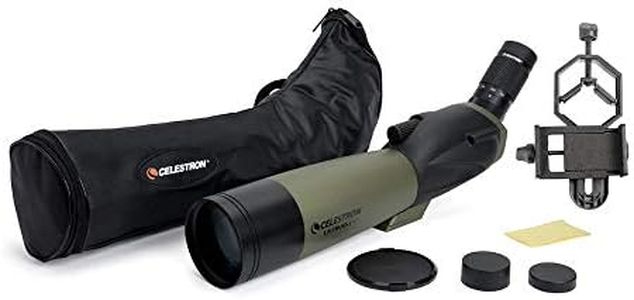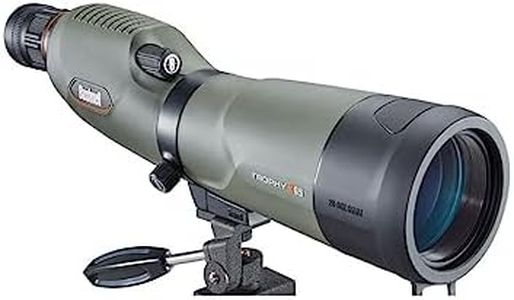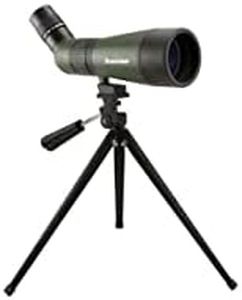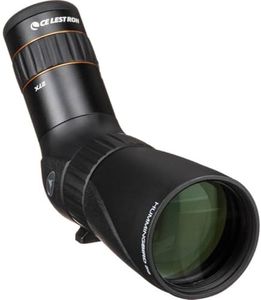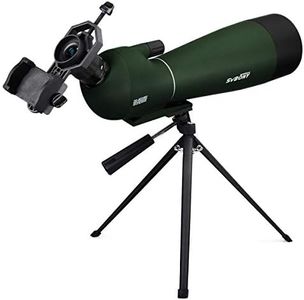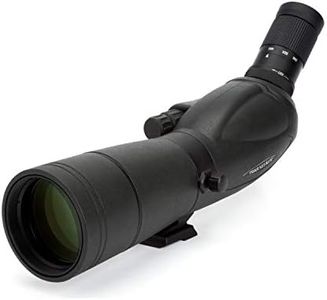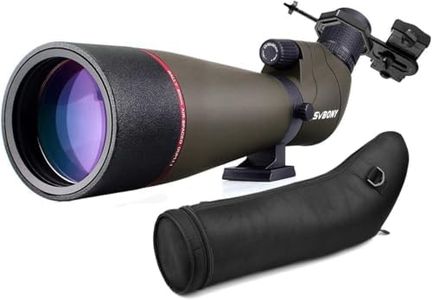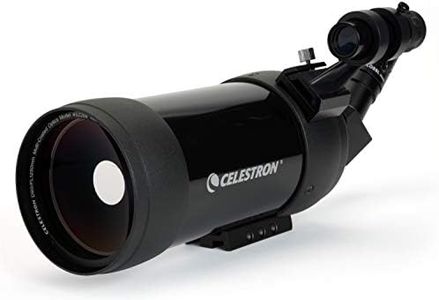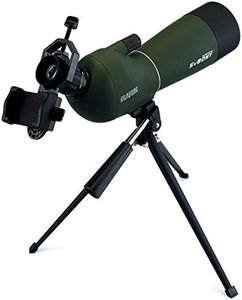We Use CookiesWe use cookies to enhance the security, performance,
functionality and for analytical and promotional activities. By continuing to browse this site you
are agreeing to our privacy policy
10 Best Birding Scopes
From leading brands and best sellers available on the web.Buying Guide for the Best Birding Scopes
Choosing the right birding scope can greatly enhance your bird-watching experience. A birding scope lets you view distant birds with clarity and detail, especially in open habitats where binoculars fall short. To find the best scope for you, it’s important to understand the specifications and how they relate to your typical birding environment and viewing preferences. Thinking about when, where, and how you’ll use your scope is the key to making a good choice.MagnificationMagnification tells you how much closer the scope will make distant birds appear compared to the naked eye. Most birding scopes have a zoom range, commonly between 15-45x or 20-60x. Lower magnification (15-30x) provides a wider field of view and is easier to use without image shake, making it best for scanning large areas or when lighting is poor. Higher magnification (over 40x) lets you see more detail but requires steadier hands, a good tripod, and bright conditions. Pick based on your typical watching distance—if you usually observe at long ranges in bright light, a higher maximum zoom may be useful, but for general birding and all-weather use, the lower end of the range is more practical.
Objective Lens DiameterThe objective lens diameter, measured in millimeters, determines how much light enters the scope and impacts image brightness and clarity. Common sizes are between 60mm and 85mm. Smaller lenses (around 60mm) make for lighter, more portable scopes with reasonable brightness for most daylight uses. Larger lenses (80mm or more) gather more light, resulting in a brighter image at high magnifications or in dim conditions, but they add size and weight. If you often bird in low light (dawn, dusk, or under dense cover), opt for a larger diameter; for frequent travel or long hikes, a smaller one may be more comfortable.
Eye ReliefEye relief refers to the distance your eye can be from the eyepiece while still seeing the full field of view. This is especially important if you wear glasses, as short eye relief means you may miss part of the image. Scopes with longer eye relief (usually 16mm or more) are more comfortable and accessible for glasses wearers. When considering eye relief, try to check specifications or test the scope to ensure you’ll see the whole image comfortably, especially if you wear eyewear.
Field of ViewField of view describes the width of the area you can see through the scope at a given distance, typically measured in feet at 1000 yards or meters at 1000 meters. Wider fields are helpful for locating birds quickly, tracking moving subjects, and scanning habitats. Generally, as magnification increases, field of view decreases. If you enjoy tracking fast-moving birds or want to spot birds in large landscapes, prioritize a wider field of view; for focusing on stationary or distant birds, a narrower view may be acceptable.
Close Focus DistanceClose focus distance tells you how near an object can be while still staying sharply in focus through the scope, usually measured in meters or feet. Most birders don’t need ultra-close focus, but if you also enjoy watching butterflies or other nearby wildlife, look for a scope with a shorter minimum focus distance.
Straight vs. Angled BodyScopes come in straight or angled body designs. A straight scope has the eyepiece in line with the barrel, making it quick to aim, especially for viewing from a car or when following moving birds. Angled scopes have the eyepiece at an angle, often 45 degrees, which is more comfortable for prolonged viewing, especially from lower tripods or when sharing with people of different heights. Choose straight if you prioritize fast tracking and ease of use from standing height; pick angled for comfortable, extended viewing and use with groups.
WeatherproofingWeatherproofing refers to how well the scope resists water, fog, and dust. Look for terms like 'waterproof' and 'fogproof,' which usually mean the scope is sealed and filled with inert gas to prevent internal fogging. If you’ll be out in varied weather or near water, good weatherproofing ensures your scope remains clear and functional in all conditions.
Weight and PortabilityThe weight and size of your scope affect how easy it is to carry on hikes, travel with, or use without fatigue. Lighter and more compact scopes are great for mobile birders or those who venture far from their cars, while heavier scopes may offer better image quality but are best for locations where you don’t have to carry them far. Think about how much you enjoy walking versus staying in one place, and choose accordingly.



